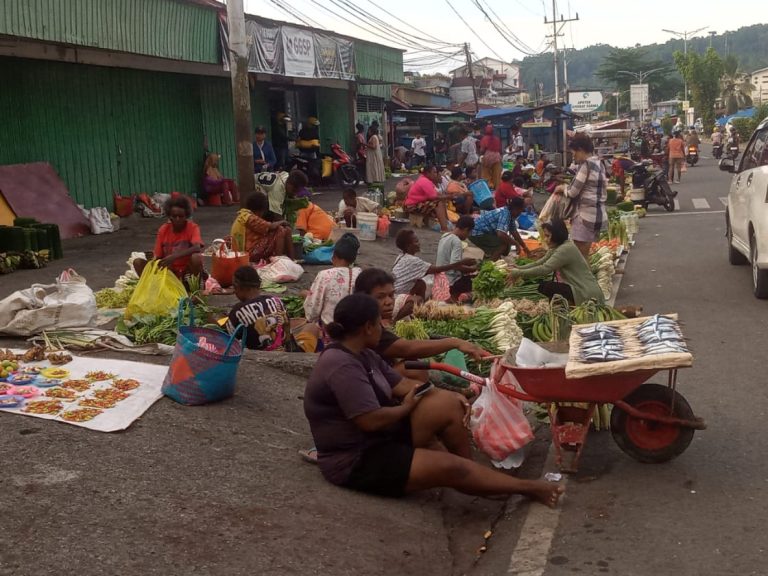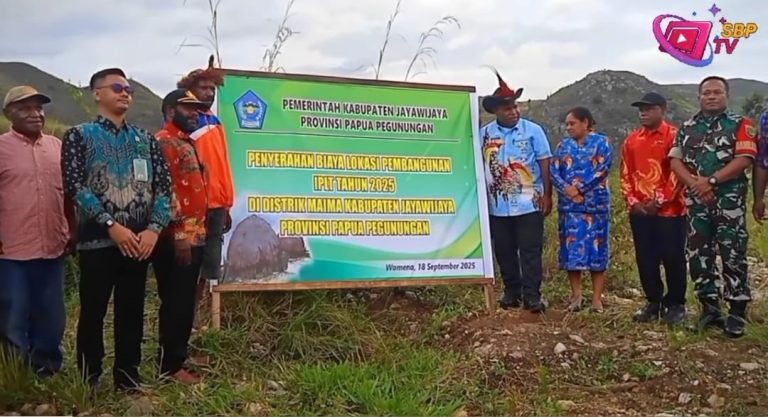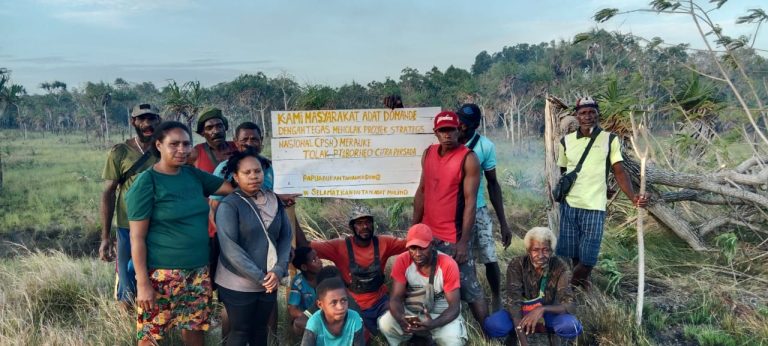
Illustration showing the existence of the WPNLA/TPNPB resistance vs the Indonesian Military (ChatGPT image generate/wenebuletin.com).
Wamena, Papua – The ongoing armed conflict in Papua, which began after its integration with Indonesia, has left deep scars on the land, rich in culture and natural beauty. The escalation of violence since 2018 has worsened, especially in the mountainous regions, turning Papua into a battlefield filled with humanitarian tragedies.
Behind the battles between the West Papua National Liberation Army (WPNLA/TPNPB) and the Indonesian military and police (TNI/Polri), there are heartbreaking stories of civilians caught in the middle of this conflict.
The tragic sequence began on December 2, 2018, in Gunung Kabo, when 17 workers from PT Istaka Karya, involved in the Trans Wamena-Nduga road project, were killed in an attack by TPNPB forces led by Brigadier General Egianus Kogeya. This attack was one of many that has claimed the lives of hundreds, both military personnel and civilians. This event marked the start of heightened tensions, leading thousands to abandon their homes and seek safer places.
Over the past few years, the armed conflict has continued to expand. Civilians have been forced to flee their homes, farms, and even places of worship. By the end of 2024, the Papua Church Council (PCC/DGP) recorded more than 70,000 refugees scattered across various conflict zones, originating from regencies like Nduga, Maybrat, Pegunungan Bintang, Intan Jaya, Yahukimo, and Puncak. Their lives have become increasingly uncertain, with no clear end to their displacement.
Fighting Fear
In early 2025, violence escalated, with multiple incidents shaking the region. On January 13, 2025, WPNLA/TPNPB attacked a military post in West Moskona, Teluk Bintuni Regency, killing three security personnel.
A few weeks later, on January 21, 2025, a suspected WPNLA attack claimed the life of a police officer in Puncak Jaya. These attacks highlighted the fragility of the situation in Papua.
However, the violence also created new hardships for civilians. On January 21, 2025, reports indicated that Indonesian National Armed Forces (TNI) personnel had destroyed 56 homes in Mimin Village, Oksop District, Pegunungan Bintang Regency. This event serves as a reminder that violence does not only come from one side but also impacts the lives of those uninvolved in the conflict.
“We are not part of this war,” said Kletus Togodli, the Catholic Church vicar in Oksibil. “But we are the ones who are paying the highest price.”
As a result of the ongoing war, hundreds of civilians, including children, have been caught in the crossfire. On April 8, 2025, two elementary school children from Intan Jaya, Nepina Duwitau (6 years old) and Nardo Duwitau (12 years old), became victims of a shootout between WPNLA forces and the Indonesian military.
Nardo was killed, while Nepina was critically injured. In this tragic event, the lives of children, who should have been full of hope, were instead filled with blood and sorrow.
Refugees Without Hope
The forced displacement of civilians has worsened as Indonesia’s military operations have intensified. In February 2025, TNI deployed 450 personnel, fully equipped with advanced military gear, to Puncak Regency.
Refugees, previously scattered across various places, have been increasingly cornered, with 71 individuals reported to be sheltering along the Brasa River on April 11, 2025, following intense fighting between TNI and WPNLA/TPNPB in Yahukimo.
The conflict has left the refugees feeling trapped and unsure of where to go. They genuinely want to live peacefully and resume their normal routines, but the armed conflict blocks any possibility of doing so.
On April 8, 2025, WPNLA claimed to have killed 11 gold miners suspected of being Indonesian security forces. Similar incidents occurred on March 29, 2025, when four TNI soldiers were killed in an attack by WPNLA in Intan Jaya.
On the other side, Indonesia, under President Prabowo Subianto, has vowed to deploy six generals to confront WPNLA, further escalating tensions. In this tense environment, no peaceful solution appears on the horizon. Both sides remain entrenched in their positions, providing no space for diplomacy or negotiations that could bring peace to Papua.
A Call for Peace
The Papua Justice and Human Integrity Foundation or Yayasan Keadilan dan Keutuhan Manusia Papua (YKKMP), an organization advocating for the rights of the Papuan people, has emphasized that this conflict must end for the sake of humanity.
“We have witnessed how many victims have fallen, both from the military and the civilian side,” said Theo Hesegem, the chairman of YKKMP. “There is nothing left to save if this violence continues. We call on all parties to heed the call for peace.”
YKKMP has proposed several recommendations to resolve the conflict in Papua, which has disturbed peace in the region. First, to open access to international media in Papua so the world can have a clear understanding of the situation.
Second, to urge the United Nations (UN) to form an independent investigative team to examine the root causes of the conflict and provide recommendations on how to end the violence.
Third, to initiate peaceful dialogue between the Indonesian government and the United Liberation Movement for West Papua (ULMWP), the political umbrella of pro-independence groups, to seek a just and peaceful solution.
“We believe that only through open dialogue, involving all parties, can we find a sustainable solution for Papua,” added Theo. “Papua does not belong to any one group or country. Papua is home to all who wish to live in peace.”
Papua, with all its breathtaking natural beauty, now exists in the shadow of a conflict that has shattered everyday life. Yet, the hope for peace remains alive in the hearts of the Papuan people, who yearn for freedom and tranquility. (Julian Haganah Howay)






